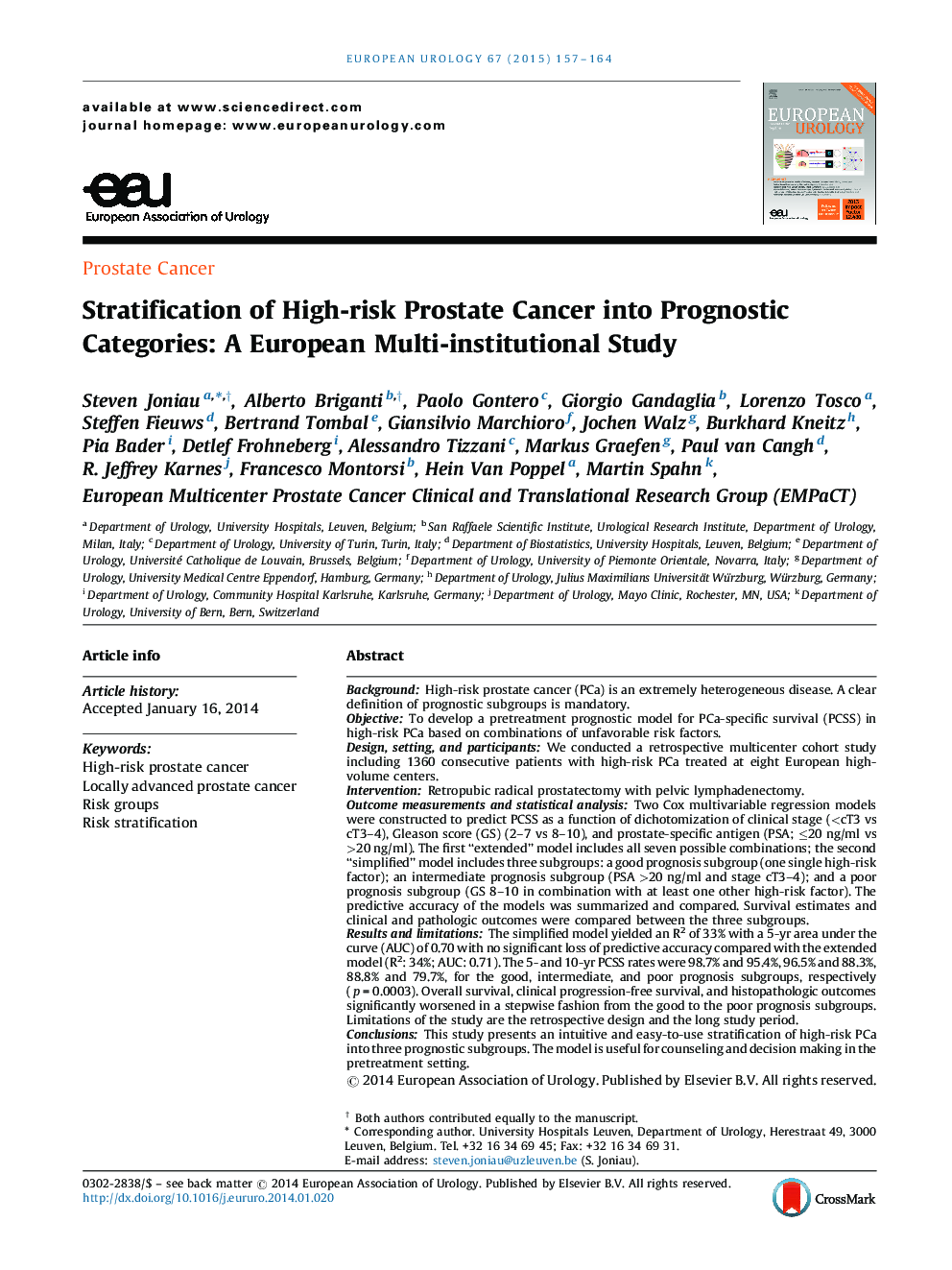| کد مقاله | کد نشریه | سال انتشار | مقاله انگلیسی | نسخه تمام متن |
|---|---|---|---|---|
| 3924544 | 1253106 | 2015 | 8 صفحه PDF | دانلود رایگان |
BackgroundHigh-risk prostate cancer (PCa) is an extremely heterogeneous disease. A clear definition of prognostic subgroups is mandatory.ObjectiveTo develop a pretreatment prognostic model for PCa-specific survival (PCSS) in high-risk PCa based on combinations of unfavorable risk factors.Design, setting, and participantsWe conducted a retrospective multicenter cohort study including 1360 consecutive patients with high-risk PCa treated at eight European high-volume centers.InterventionRetropubic radical prostatectomy with pelvic lymphadenectomy.Outcome measurements and statistical analysisTwo Cox multivariable regression models were constructed to predict PCSS as a function of dichotomization of clinical stage (
Journal: European Urology - Volume 67, Issue 1, January 2015, Pages 157–164
